18+ Quinoa Substitutes: The Ultimate Flavor and Nutrition 2023
Are there any quinoa substitutes that are superior to this healthy grain in terms of both nutrition and taste? Quinoa is well known as a superfood, a nutrient-rich grain especially beneficial to health.
But is quinoa already the best? In this article, you and I will learn about excellent alternatives to quinoa in your diet. These options will surprise you with their superiority!
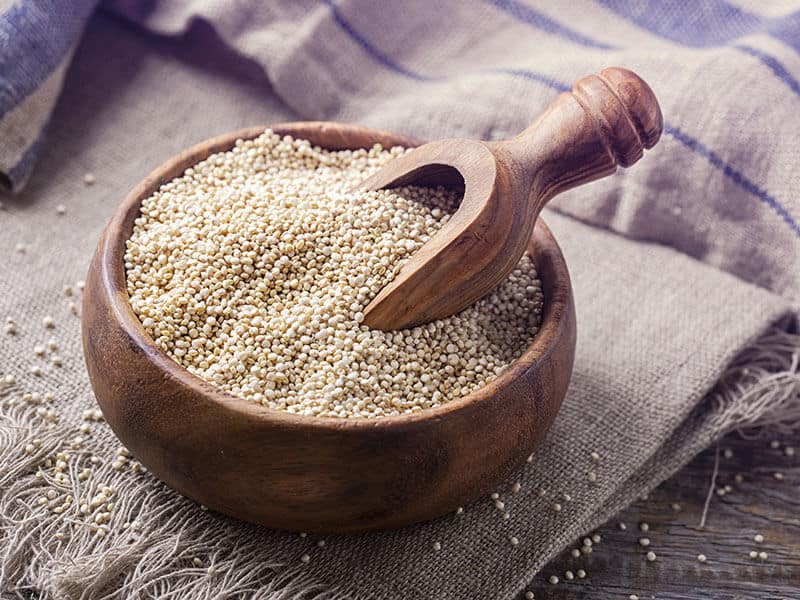
What is Quinoa?
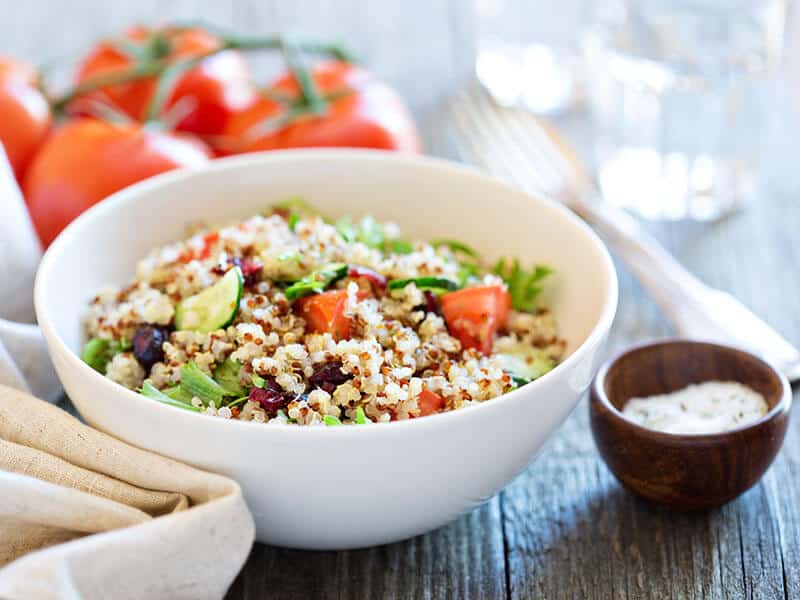
Quinoa, scientifically known as Chenopodium quinoa, belongs to the Amaranth family (1) . This is not officially classified as a grain because it closely resembles amaranth, spinach, beetroot, and other pseudocereals.
Quinoa was used from 3000 to 4000 years ago in the area of Lake Titicaca. Even archaeological evidence indicates that this plant appeared a long time ago, about 5,200 to 7,000 years ago.
Quinoa is native to the Andes region of Peru, Colombia, Ecuador, Chile, and Bolivia. Currently, this variety is widely grown in countries in Europe, Australia, the United States, China, Canada, and Japan.
Discover everything you need to know about storing and cooking with quinoa!
Interesting Characteristics Of Quinoa
Quinoa has an average height of 1 to 2m. The plant is woody and has many branches. The leaves are alternate, and the foliage is broad and hairy on the surface. The seed is about 2 mm in diameter, and the color ranges from white, red, to black depending on the variety.
Once harvested, the quinoa grains are processed to remove the outer shell, which often contains saponins, which cause bitterness. Quinoa is cooked like rice. You can prepare many attractive dishes with considerable nutritional value.
Besides, the leaves of the quinoa plant can be used as a vegetable, a habit that is still limited compared to the use of quinoa grains. About the taste, quinoa is mildly nutty and sweet. It also has a distinct fluffy and chewy texture.
Regarding the classification of Quinoa seeds, people will classify them by grain color. There are many varieties of Quinoa in the world, such as white quinoa, red quinoa, and black quinoa, etc.
You can see this video to know more:
Comparison Chart: Quinoa and The Ultimate Substitutes
To get a quick look at the flavor and usages of 19 quinoa substitutes before coming to details, let discover the chart below:
Best Quinoa Substitutes: 19 Optimal Choices For Your Health
Yes, quinoa is a superfood with many nutrients and proteins. However, there are still plenty of excellent substitutes to enrich your menu. You can replace quinoa with these great alternatives:
1. Barley
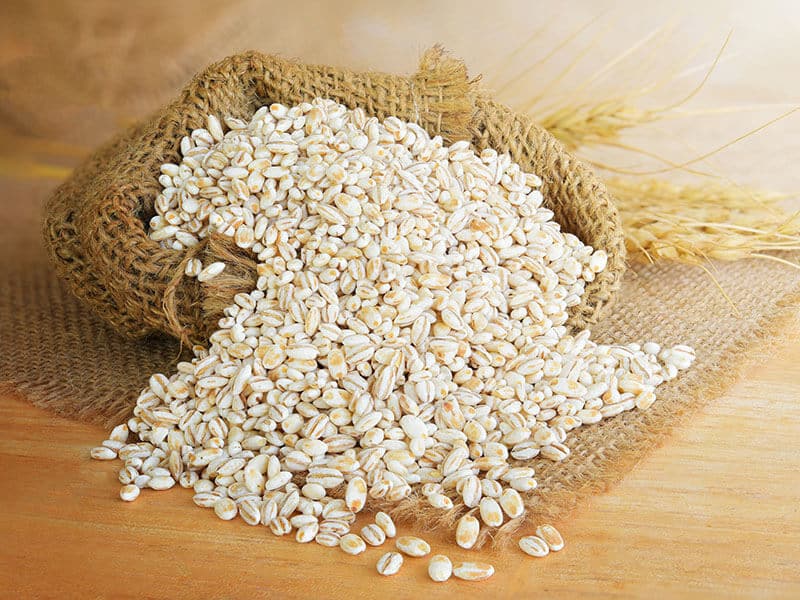
Barley is another excellent alternative to quinoa that you can choose from. Barley offers a chewy texture and a subtle, nutty flavor that many people love. You can imagine its texture and taste are almost identical to oats.
Moreover, barley contains many healthy nutrients and vitamins. It helps add fiber to your diet and contributes to lower cholesterol and cardiovascular risk. It also contributes to a healthy intestine.
The good thing is that barley helps you feel full for longer – a boon for weight loss compared to other grains. You can have barley mixed with fruit for an energizing breakfast. This grain goes well with both savory and sweet recipes.
2. Brown Rice
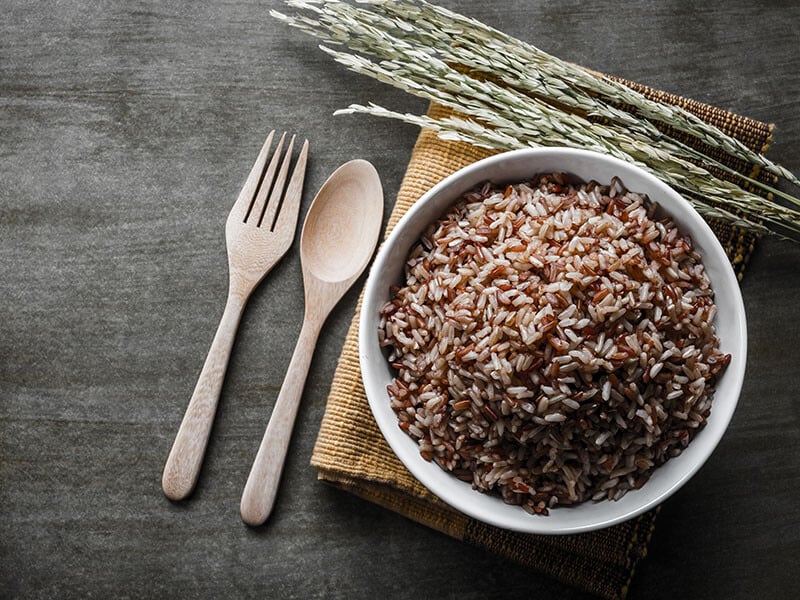
White rice is probably the easiest substitute for cooked quinoa; brown rice is a better alternative for quinoa than white rice. Because it is closer to color, flavor, and nutrition. Its taste is nutty and earthy with a bready note.
Brown rice has a different way of absorbing liquids than quinoa, so the cooking time of each type is also different. Brown rice cooks much slower than quinoa, so you need to make sure to prepare it sooner.
Brown rice has higher carbs and calories and also provides more fiber than quinoa. They are a good substitute for quinoa in recipes with red meat and savory poultry such as chicken breast and fish.
Due to its high fiber content, brown rice is also considered beneficial for the digestive system. This is also a rich source of magnesium, which is essential for maintaining heart health.
Brown rice is healthy to enjoy, but it’s pretty hard to cook. Let’s learn how to cook it perfectly.
3. Couscous
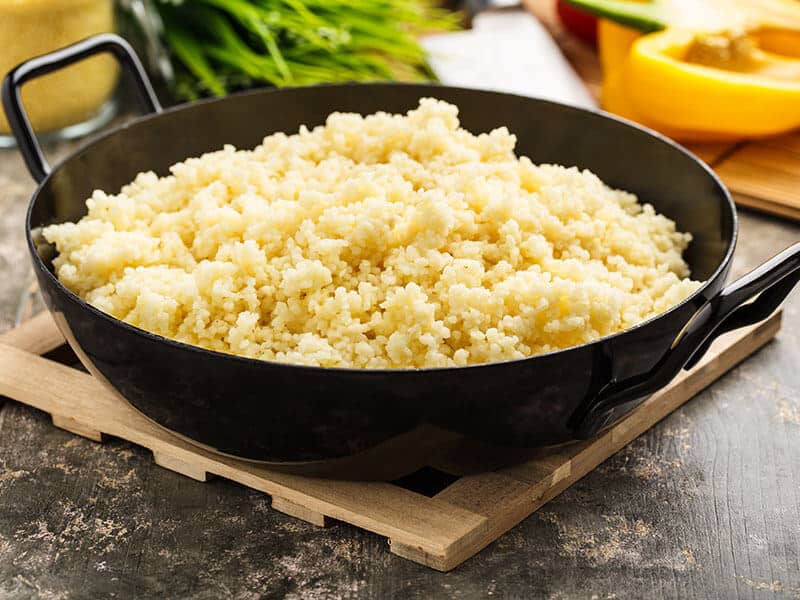
If you love Italian cuisine, surely couscous will be the food you love. Couscous has a mild and neutral taste suitable to replace quinoa in many recipes. Its pasta-like texture can create an interesting eating experience.
When you want a creamy stewed dish or meat and vegetables for your main meal, you can think of replacing quinoa with cooked couscous.
It’s important to note that couscous cooks faster than quinoa, so you need to be careful not to overcook it. It would be best for you to cook it thoroughly before applying it to a recipe containing quinoa.
4. Cauliflower
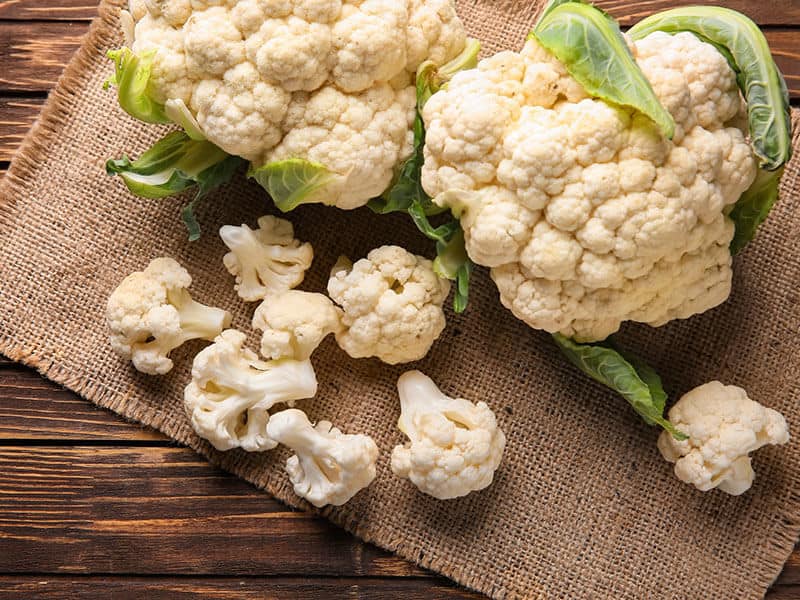
In case you like vegetables, opt for cauliflower over quinoa. This is a low-carb alternative – healthier and lighter. Contrary to its low-calorie content, it has a high nutritional content. And the taste is excellent with a little nutty and a little sweet, goes so well with the crunchy texture.
Cauliflower has impressive levels of calcium, vitamin K, and fiber as quinoa. This vegetable is also known to reduce the risk of cancer. Cauliflower also helps you improve digestion.
Instead of making a typical roasted or sautéed cauliflower dish, just steam it the way you would with quinoa. It takes some time to prepare for the grazing and juicing stages, but this delicious dish is worth it.
5. Broccoli
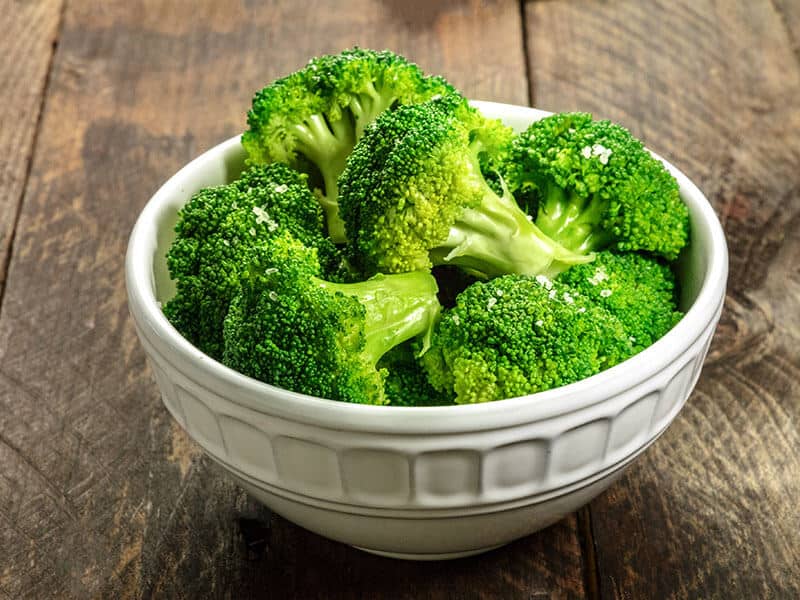
Similar to cauliflower, broccoli is an ideal substitute for quinoa when you want to cut excess calories from your diet. The great thing is that broccoli has fewer calories than quinoa!
You can eat a lot of these greens and still not be afraid of gaining weight. It tastes herbaceous, grassy, and earthy with a hint of bitterness.
Moreover, broccoli contains many vitamins, minerals, and healthy bio-compounds. It also contains powerful antioxidants. Cook broccoli similar to how you would cook cauliflower in place of quinoa. Eat it as an accompaniment to meat or fish for a great experience.
Why is broccoli a superfood? Let’s explore together.
6. Roasted Vegetables
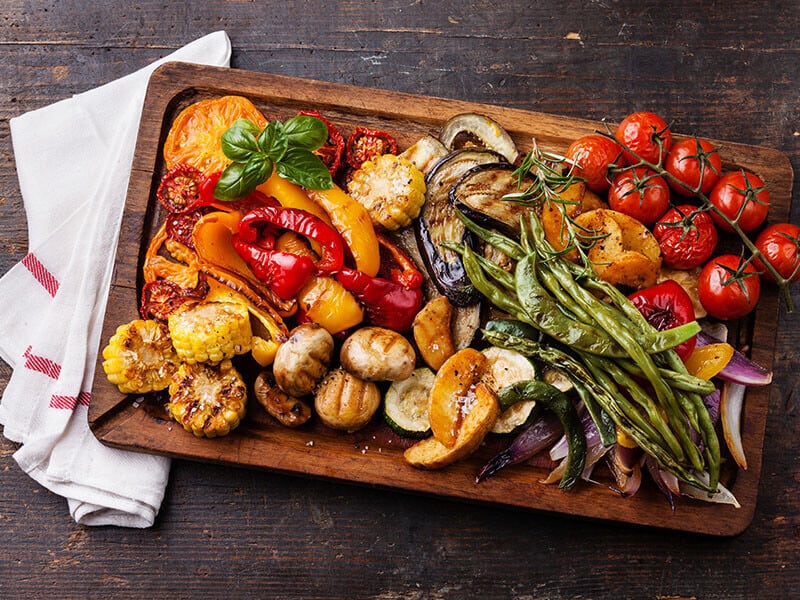
In addition to cauliflower and broccoli, many other vegetables can replace quinoa with higher nutritional content, such as root vegetables. They are useful in case you don’t want excess protein on your plate.
Vegetables are a good source of vitamins and minerals, including folate, vitamin C, and potassium. Vegetables and fruits also contain a lot of fiber and antioxidants, so they improve health and prevent diseases.
Serve your meat with a mix of stir-fried, steamed, or grilled root vegetables, depending on your preference. Vegetables make your dishes richer and fuller. Drizzle with olive oil, salt, and pepper, or other sauces for a nutty flavor.
7. Chickpeas
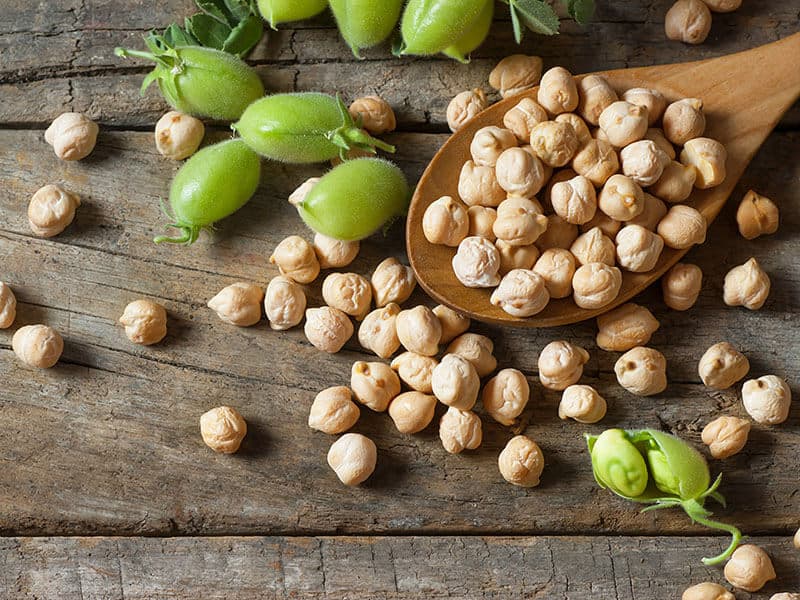
Are you a busy person? Chickpeas are a super fast alternative to quinoa. Fresh chickpeas or canned chickpeas both work in this case. It fills you up quickly and provides a high nutritional value and the nutty, beany flavor with an earthy note.
The gluten-free chickpea is much larger than the quinoa grain. In addition, it provides you with a very high protein and fiber content that is not inferior to quinoa. Compared to other grains, chickpeas contain a substantial nutritional value that you can hardly find around.
Chickpeas have several properties that can help you control your weight. Furthermore, chickpeas are easy to cook. They can be used as a nutritious snack or combined perfectly in many dishes such as sauce, vegetables, meat, etc. You can puree them or leave them whole.
8. Red Beans
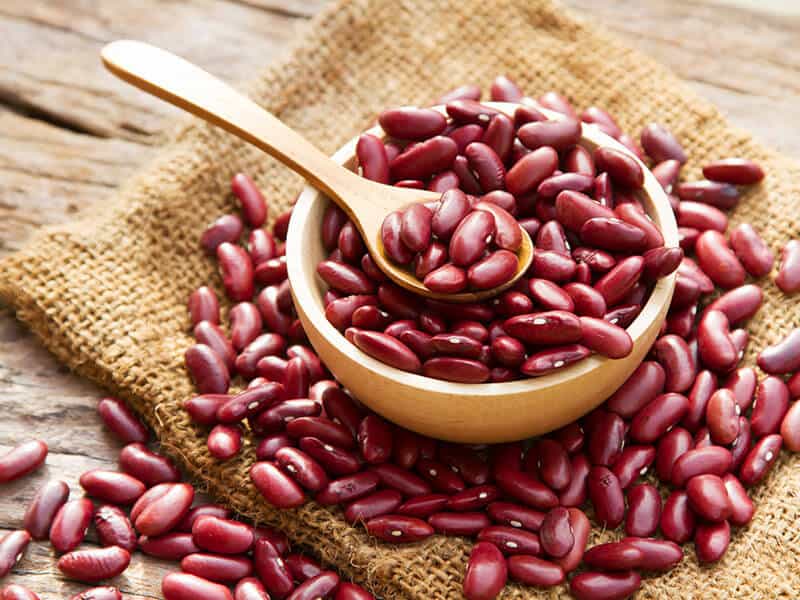
Similar to chickpeas, fresh or canned red beans are acceptable in case you want to substitute quinoa. This is a healthy option for a quick meal, although red beans are larger than quinoa. The flavor is delicate and nutty with a slightly sweet touch.
Like quinoa, red beans are packed with healthy protein. They are beneficial for those looking to lose weight because they provide few calories but are rich in fiber, and they will help you feel full for a long time.
It’s excellent for diets like keto. You can eat red beans puree or whole, combined with your favorite vegetables, meat, and sauces.
9. Legumes
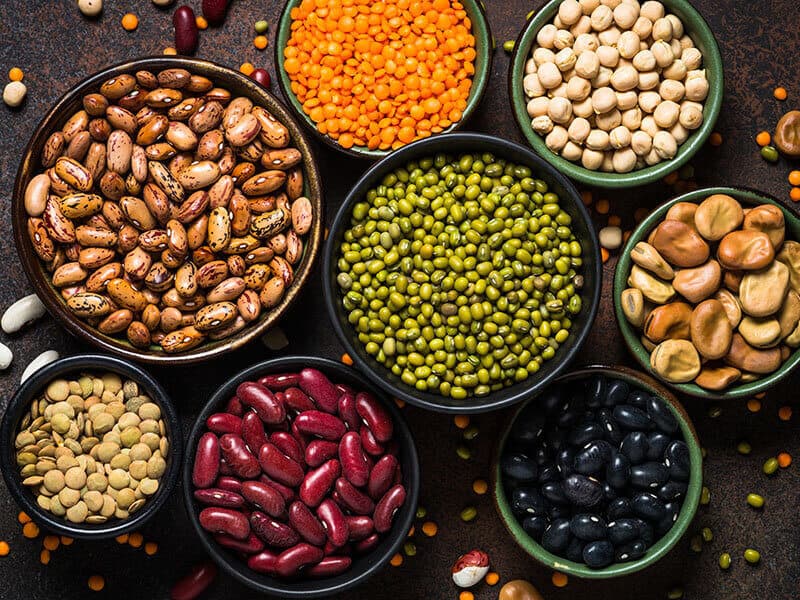
Why not try other legumes as quinoa substitutes in your dishes? In addition to the aforementioned red beans, there are many legumes with different colors and shapes that you can choose from, such as black beans, lentils, peas or pinto, etc.
Legumes are nutritional foods that experts highly appreciate because of their rich fiber and vitamin B content. This is an alternative to help you meet your daily protein needs in place of quinoa.
You can steam legumes to mix in a salad bowl. Add seasonings like garlic salt or chili pepper to make them a great snack. The nutty flavor will not let you down.
You can see this video to know more:
10. Nuts
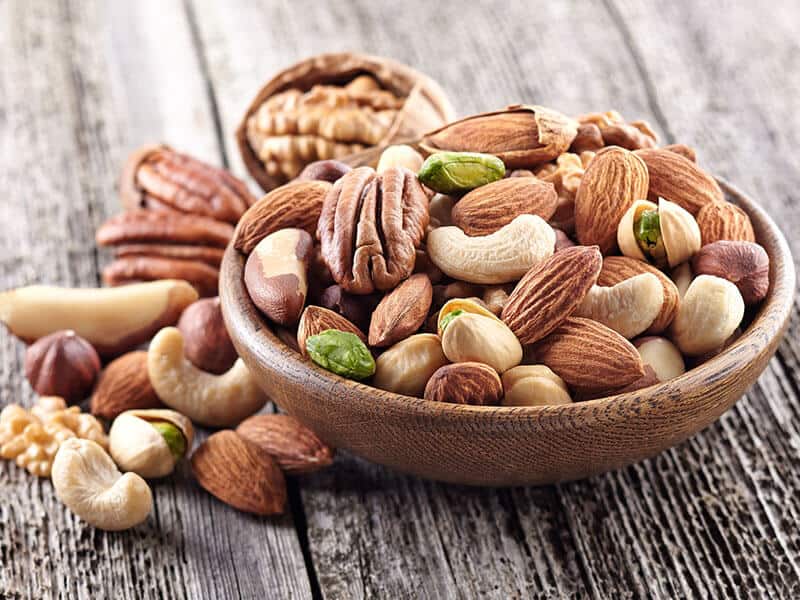
As an alternative to quinoa, you can consider almonds, pine nuts, cashews, or walnuts. These nuts have a delightfully crunchy texture, nutty flavor and add great nutritional value to your recipe.
Nuts are high in both fiber and healthy fat. They offer a variety of health benefits, especially regarding the reduction of risk factors for heart disease and a healthy supply of energy.
Add your favorite nuts to your salad bowl to take this to the next level. Moreover, with nuts, you do not need to prepare or cook in advance. Really quick and healthy!
11. Freekeh
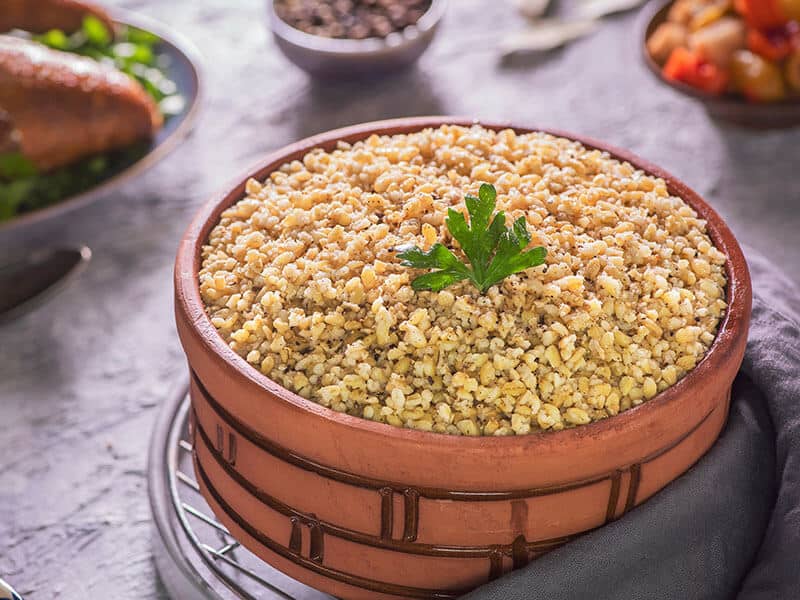
Freekeh is the product obtained when the wheat is young and green. Freekeh with a flavor similar to barley may be an alternative to quinoa. It has a smoky and nutty taste, the same as other wheat grains.
The health benefits of freekeh are undisputed, and many argue that this will be the new superfood that can replace quinoa. However, you should note, freekeh is not a gluten-free food because it is a form of wheat.
But making up for the gluten problem is the fiber content because freekeh contains nearly twice as much protein and fiber as quinoa.
This grain can be used in place of quinoa for a simple side dish or even as a topping for salads. You can also use freekeh to make breakfast. It can even be used in stews and even desserts.
12. Kamut
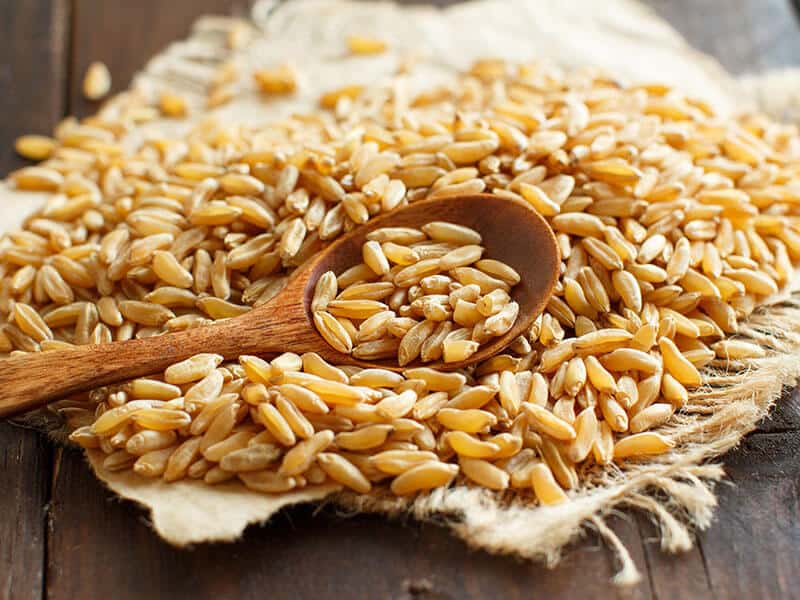
Kamut is a type of Khorasan wheat with a great nutty, rich taste, similar to basmati brown rice. It has a chewy texture with firm, pliable, and plump grains. It also has high nutritional value and hypoallergenic properties, thanks to its gluten-freeness.
Kamut is an excellent alternative to quinoa because it has no fat (unlike other kinds of wheat) and is exceptionally high in protein. It also contains many fatty acids to fuel your day.
What’s more, Kamut retains its unique grain shape even after cooking, making the dish more pleasing to the eye. Kamut can be combined in sweet and savory dishes, as long as you change the seasoning slightly. It also goes well with Mexican dishes or salads.
13. Teff
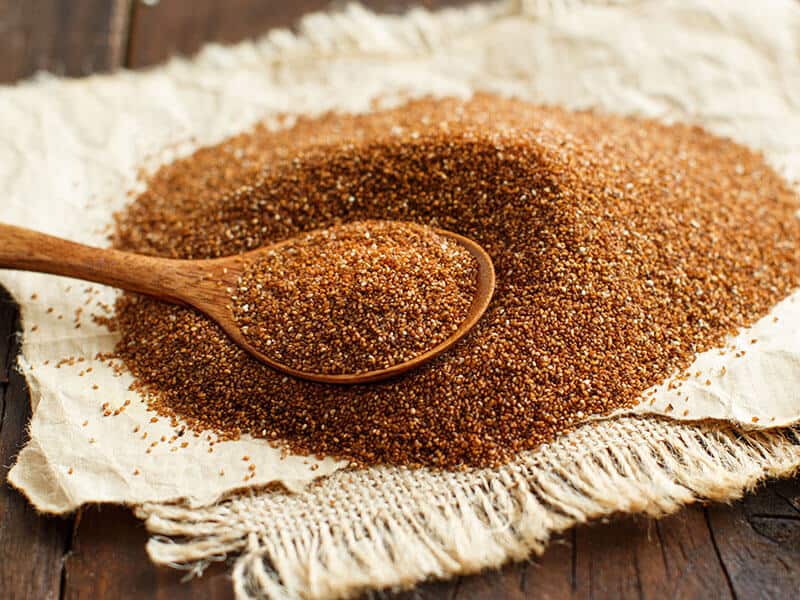
Teff is a tropical cereal crop, the most common of which are brown and ivory white. This grain is an old Ethiopian cooking ingredient. This is also considered the world’s smallest cereal, with the size of only 1/100th of a grain of wheat.
Teff grains taste just like quinoa: nutty, rich, and earthy. The light-colored variety has a slightly sweet taste, so it is viral. It also has more significant nutritional values than quinoa. In particular, teff is a rich source of vitamin C.
Furthermore, teff contains no fat, gluten or sugar, but is rich in nutrients and minerals – especially iron, fiber, and protein.
With its versatility, teff is suitable for replacing quinoa in both sweet and savory dishes. You can use it to make bread, cakes, soups, porridges, and stews. The cooking time is equal to quinoa, so it is even easier for you to substitute.
14. Millet
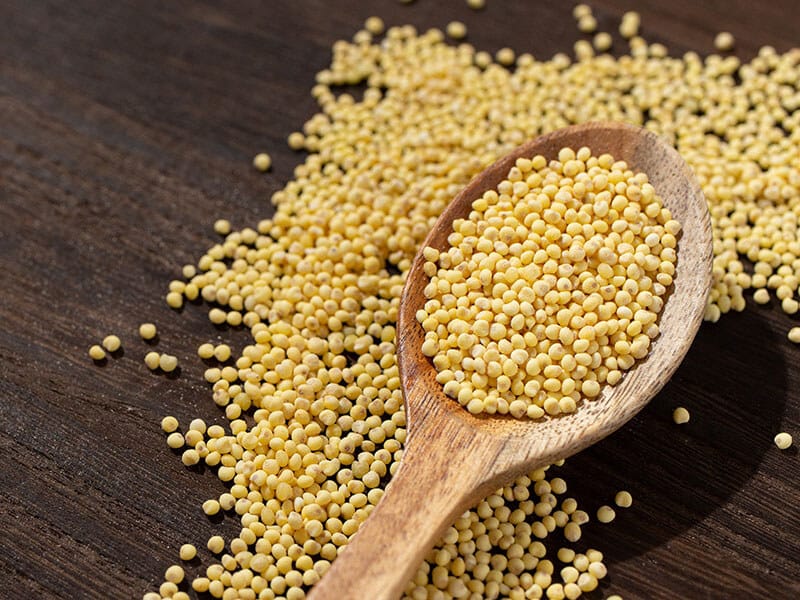
Millet is a whole grain that’s packed with protein, antioxidants, and nutrients similar to quinoa. The taste is mild corn-like with a hint of sweetness and nuttiness.
Plus, like quinoa, millet is gluten-free. This makes millet a great choice for people with celiac disease or following a gluten-free diet. This grain can be used instead of quinoa in baking, served as a side dish with stir fry, or added to soups and salads.
Furthermore, the nutritional profile of millet provides more essential amino acids than most other grains. Moreover, millet boasts the highest calcium content of all grains.
When cooking millet, be aware that this grain is hydrophilic, so cooked millet is softer and smoother than quinoa. If you want pureed millet, you can add more water and cook longer to create a creamy texture.
15. Bulgur
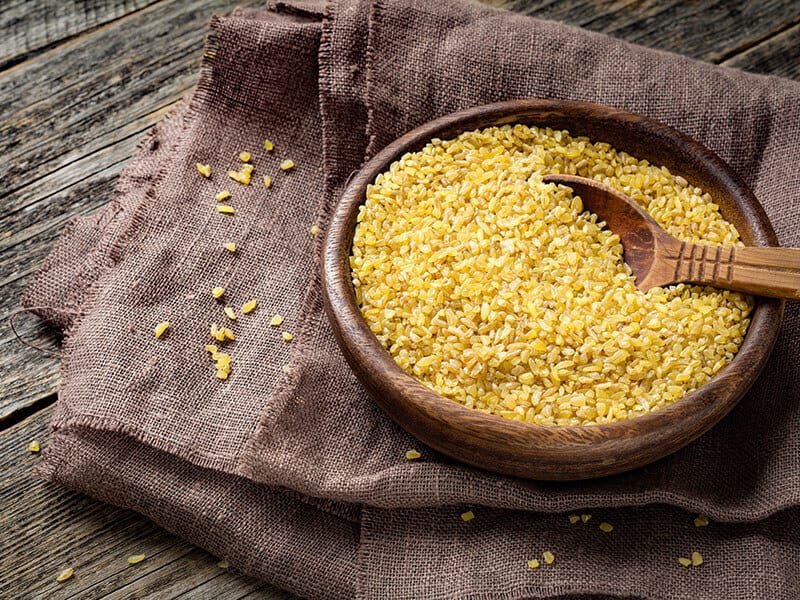
Bulgur is a type of wheat known as the main ingredient used in tabbouleh. It is light and nutty with a chewy texture. Bulgur can even provide you with more fiber, vitamins, and minerals than quinoa.
This grain is also the best choice for a weight-loss diet due to its low-fat and high plant-based protein content. However, bulgur is not a gluten-free alternative to quinoa.
Since bulgur is a versatile grain, there are many different cooking methods. You can use it in place of quinoa in many salads and soups or as overnight oats. It can also be included in some bread.
16. Buckwheat
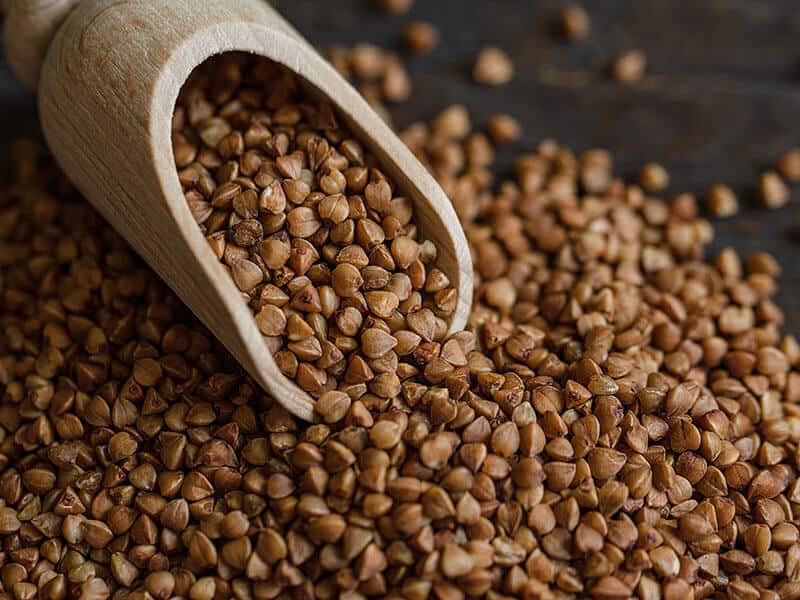
Buckwheat is a whole grain rich in protein and fiber, just a bit lower than quinoa. It has an uneven shape and is usually brown. Like quinoa, buckwheat is gluten-free despite its “wheat” name. Its taste is a combination of a bit earthy, nutty and bitter like quinoa.
This is a cereal with higher nutritional value than rice and oats. It also helps lower cholesterol and blood pressure and is rich in disease-fighting antioxidants.
When cooked, it has a texture similar to porridge. Buckwheat’s mild and aromatic flavor makes it suitable for replacing quinoa in bread, banana bread, and pancake recipes.
17. Fonio
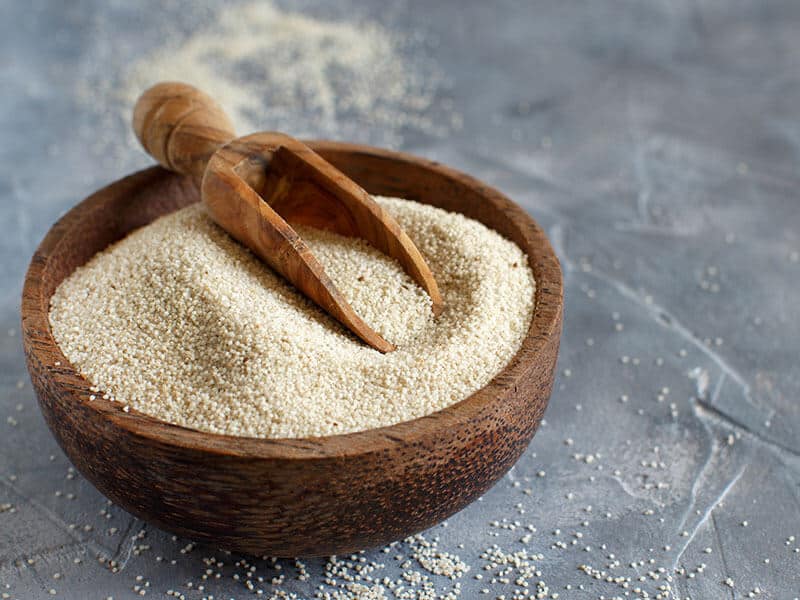
Fonio’s shape looks a bit like couscous and a bit like quinoa. This grain is even more nutritious, more delicious than quinoa and couscous. It has a nuttier and richer taste than quinoa and is tempting to eat with an earthy hint.
Like quinoa, fonio is a gluten-free option with a lot of good substances. It can provide you with vitamin B. Furthermore, fonio is a great choice for vegetarians with its highest calcium content among the grains.
You can cook fonio like rice along with vegetables, meat, and a variety of spices. You can use Fonio in many salads, soups, or cereals.
18. Sorghum
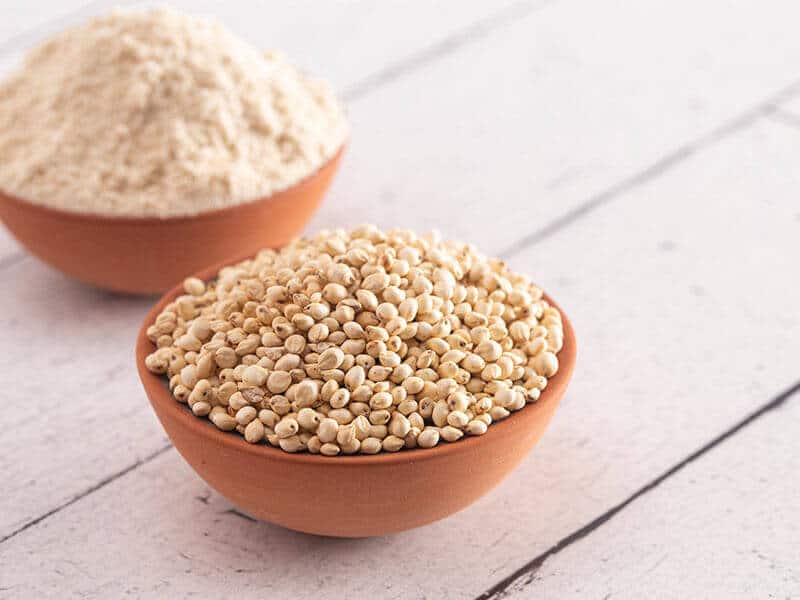
Sorghum is a round, chewy grain that can be used as a substitute for quinoa. It is an ancient grain and a staple food in many parts of the world. Sorghum is a highly nutritious grain. Like quinoa, it’s utterly gluten-free with a distinct mild and earthy taste.
These grains are also an excellent source of protein. This cereal is also packed with many nutrients and vitamins. Sorghum is suitable as a quinoa substitute for stews or sauces.
19. Amaranth
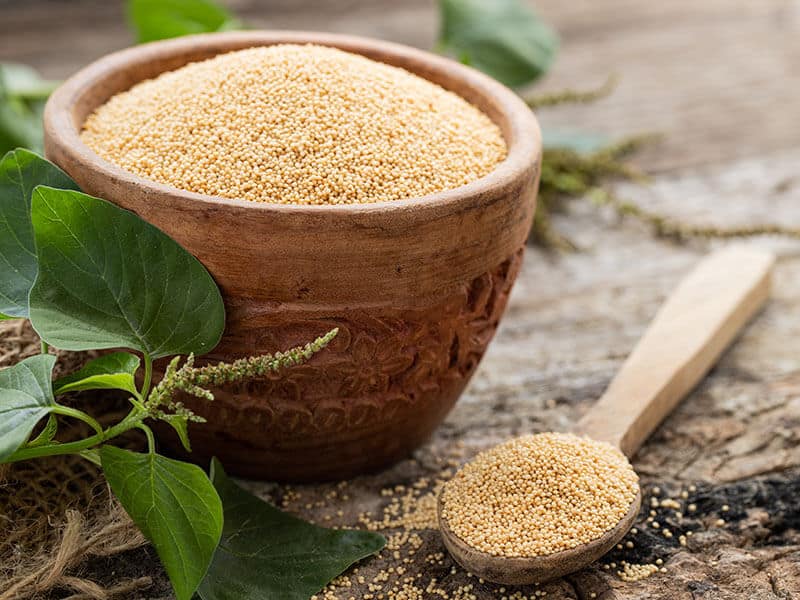
The nutritional richness of this tiny grain is superior and better than that of other grains, including quinoa. Indeed, amaranth includes more protein than most grains, including lysine, methionine, and tryptophan. Its amino acids are also more balanced.
Amaranth is also a great supplier of calcium, vitamin B6, vitamin C, magnesium, and zinc. Besides, nutritionists confirm that the protein quality of amaranth grains is good and surpasses that of cow’s milk.
This is also a gluten-free grain. Its nutty and sweet taste is also excellent to eat with a delightfully crunchy texture.
Moreover, amaranth also does its job well in both savory and sweet dishes. You can use it as a meal or a dessert with a sauce. Using it to cook nutritious porridge every day is very beneficial for health.
Nutritional Composition Of Quinoa
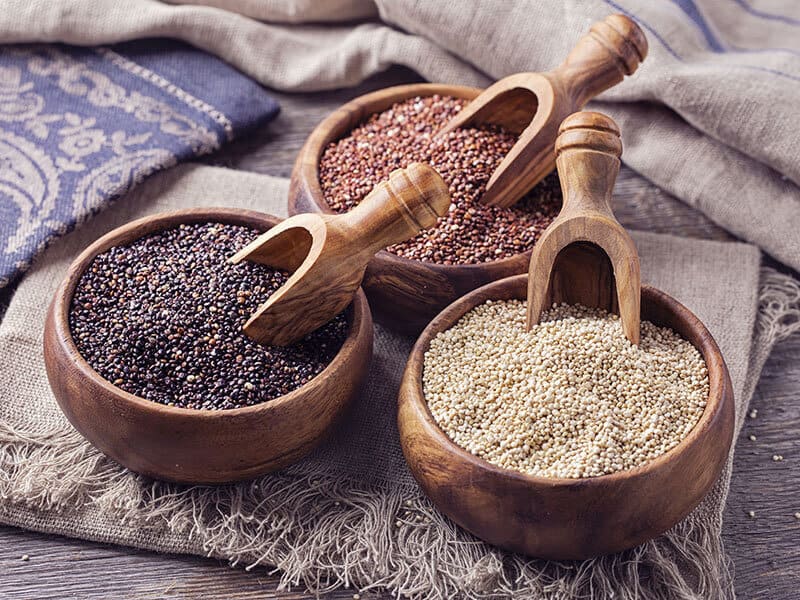
Although not considered an official grain, quinoa is used and offers nutritional value not inferior to other foods in the cereal group. Overall, quinoa’s antioxidant content is the highest of the ten common grains and legumes. And its protein content is remarkably high (2).
Carbs
Carbs make up about 21% of cooked quinoa, of which about 84% is starch, and the rest is fiber, with a small number of sugars about 4%. Therefore, quinoa has a low glycemic index (GI) of about 53, so it is amicable in diets related to obesity and some other diseases, especially diabetes.
Fiber
Fiber makes up about 10% of cooked quinoa (dry weight), and 80-90% of that is insoluble fiber. In addition, quinoa also consists of some resistant starch, improving gut health and the digestive system.
Protein
Protein makes up about 16% of the dry weight of quinoa, higher than some other grains. As it consists of 9 essential amino acids, the complete protein composition is comparable to a high-quality protein commonly found in milk, casein.
Vitamins and Minerals
Quinoa is rich in vitamins and minerals such as:
- Manganese: Necessary in metabolism, development, and growth.
- Phosphorus: Plays a role in bone health and maintains various tissues inside the body.
- Copper: Plays an essential role in heart health.
- Vitamin B9: Necessary for cell function and tissue growth, often recommended in the diet of pregnant women.
- Iron: Participates in many functions in the body, especially supporting oxygen transport in red blood cells.
Other Plant Compounds
In addition to containing minerals and vitamins, quinoa also includes a variety of antioxidants and plant compounds such as:
- Quercetin: Belongs to a group of polyphenol antioxidants that can protect against many diseases such as osteoporosis, heart disease, and some cancers.
- Kaempferol: May reduce the risk of chronic diseases.
- Squalene: As a precursor to steroids, it acts as an antioxidant.
- Phytic acid: This nutrient enhances the absorption of certain minerals such as iron and zinc.
- Oxalate: May bind with calcium to reduce the body’s absorption of this mineral, thereby decreasing the risk of kidney stone formation.
What Are The Benefits Of Quinoa On Your Health?
You should understand the benefits of quinoa. Because quinoa is rich in minerals, vitamins, antioxidants, and nutrients, quinoa has the following outstanding effects:
- Reduce blood sugar
- Safe gluten-free Content
- The fiber content is much higher than cereals
- Contain many essential minerals
- Supports the body’s metabolism
- Rich in antioxidants
- Beneficial for heart health
- Provides a rich source of protein
- Supports weight loss process
Notes When Using Quinoa
When planning to choose quinoa grains in your diet, you need to keep a few things in mind as follows:
- May Cause Allergies: Although the research is still limited, quinoa grains can cause allergies to the body.
- May Cause Side Effects: Misusing quinoa grains or being unfamiliar with the first use can cause side effects. The habit of consuming large amounts of fiber from quinoa grains when first eaten will cause the body to encounter some digestive problems.
FAQs:
Some helpful information in the answers below will give you a more comprehensive look at quinoa and its alternatives:
Let’s Build A Healthy Diet With Quinoa Substitutes!
Yes, quinoa is a superfood with many health benefits. Quinoa contains many nutrients and is relatively high in quality protein. However, there are still plenty of vitamins, minerals, and antioxidant-rich options to enrich your menu.
If you want to increase your diet’s nutrient content and flavor, you can replace quinoa with the extraordinary alternatives I mentioned above.
With the above sharing, hopefully, you can have helpful information about quinoa substitutes. If you found my post useful, do not hesitate to like, share and leave a comment. Let’s build a healthy, nutritious, and delicious diet together!
References
- En.wikipedia.org. 2021. Quinoa – Wikipedia.
- The Nutrition Source. 2021. Quinoa.

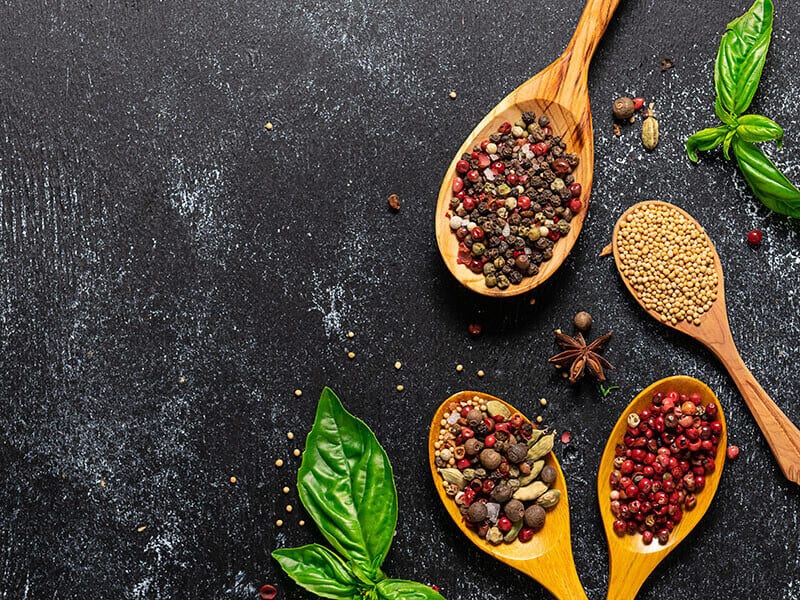
Liam O’Brien
Founder & Recipe Developer
Expertise
Education
Dublin Institute of Technology (now Technological University Dublin)
Ballymaloe Cookery School, County Cork, Ireland
Liam O’Brien is the co-founder and kitchen soul behind Good Tasting Meals, a chef who believes that cooking shouldn’t feel stressful or complicated.
He earned his culinary stripes at Technological University Dublin and polished his farm-to-table skills at Ballymaloe Cookery School. With over 15 years flipping pans and stirring up stories, Liam has worked in family cafés, bustling bistros, and everything in between.
At Good Tasting Meals, Liam brings you recipes that feel like home: cozy, simple, and full of flavor.